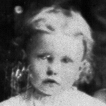Now on DVD!
This gripping film, even at over four hours in length, won the Academy Award for Best Documentary Feature as well as the FIPRESCI prize at Cannes (1988).  The narration by the beautiful and beloved actress Jeanne Moreau serves as counterpoint to the interviews with the many whom Ophüls gleefully helps to expose themselves as knaves, rogues, fools, and war criminals—by his trademark technique of asking apparently ingenuous questions and getting even more than the answers he seeks, sometimes even a broken camera or a punch in the mouth for his trouble. Hôtel Terminus is in some respects even better than its predecessor, Le Chagrin et la pitié (1969). It takes its title from the days when the Gestapo headquarters was located at the train station in Paris and known by this grim nickname.
The narration by the beautiful and beloved actress Jeanne Moreau serves as counterpoint to the interviews with the many whom Ophüls gleefully helps to expose themselves as knaves, rogues, fools, and war criminals—by his trademark technique of asking apparently ingenuous questions and getting even more than the answers he seeks, sometimes even a broken camera or a punch in the mouth for his trouble. Hôtel Terminus is in some respects even better than its predecessor, Le Chagrin et la pitié (1969). It takes its title from the days when the Gestapo headquarters was located at the train station in Paris and known by this grim nickname.
Barbie (1913-1991), also known as the Butcher of Lyon, was truly a human cockroach. He attained the rank of Hauptsturmführer (i.e., army captain) in the S.S. and on his assignment to this city in the region of Rhône-Alpes between Paris and Marseilles, became head of the Gestapo there. His crimes were many, since at least 10, 000 people are estimated to have died under his stewardship. Two of his most notorious deeds were the capture of Jewish children at Izieu,  their transportation to the Drancy internment camp, and then their deportation to Auschwitz for extermination; and, of course, the feat for which he was most celebrated by the S.S., his torture and murder of the Resistance fighter Jean Moulin.
their transportation to the Drancy internment camp, and then their deportation to Auschwitz for extermination; and, of course, the feat for which he was most celebrated by the S.S., his torture and murder of the Resistance fighter Jean Moulin.
The Film
Although the subject is one man rather than the members of a community, the scope and reach of Hôtel is in many respects even greater and broader than its predecessor Chagrin, since the later feature seems to indict an entire world that appears to have been complicit in aiding, abetting, and even hiding Barbie. Even though the Nazi-hunters the Klarsfelds had tracked him down and identified him in Bolivia as early as 1971, that government had no apparent interest in extraditing him. That country’s army uniforms, in fact, bore a strong resemblance to those designed by Hugo Boss for the S.S. And of course there were others who not-so-unwittingly collaborated with this war criminal, as the director helps us discover through his gentle but firm interrogation of his subjects: the U.S. intelligence officers who used him as a spy on the Communists; the many citizens of Lyon who appeased him to survive;  and, most horribly, those who served proudly with Barbie and appeared not to be at all repentant when interviewed, such as Wolfgang Gustmann, the former Waffen-S.S. officer, sitting genially in front of his Christmas tree. Upon Barbie’s extradition, he was defended at trial for crimes against humanity by the leftist lawyer Jaques Vergès, who used the occasion to expose human rights violations by the French in Algeria. The prisoner was found guilty and died in prison, receiving the best of care, in 1991.
and, most horribly, those who served proudly with Barbie and appeared not to be at all repentant when interviewed, such as Wolfgang Gustmann, the former Waffen-S.S. officer, sitting genially in front of his Christmas tree. Upon Barbie’s extradition, he was defended at trial for crimes against humanity by the leftist lawyer Jaques Vergès, who used the occasion to expose human rights violations by the French in Algeria. The prisoner was found guilty and died in prison, receiving the best of care, in 1991.
 Hôtel Terminus: Klaus Barbie et son temps (1988)
Hôtel Terminus: Klaus Barbie et son temps (1988)